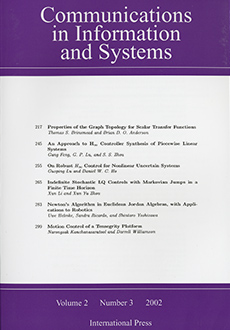Abstract
Mobile communication channels are often modeled as linear time-varying filters or, equivalently, as time-frequency integral operators with finite support in time and frequency. Such a characterization inherently assumes the signals are narrowband and may not be appropriate for wideband signals. In this paper time-scale characterizations are examined that are useful in wideband time-varying channels, for which a time-scale integral operator is physically justifiable. A review of these time-frequency and time-scale characterizations is presented. Both the time-frequency and time-scale integral operators have a two-dimensional discrete characterization which motivates the design of time-frequency or time-scale rake receivers. These receivers have taps for both time and frequency (or time and scale) shifts of the transmitted signal. A general theory of these characterizations which generates, as specific cases, the discrete time-frequency and time-scale models is presented here. The interpretation of these models, namely, that they can be seen to arise from processing assumptions on the transmit and receive waveforms is discussed. Out of this discussion a third model arises: a frequency-scale continuous channel model with an associated discrete frequency-scale characterization.
Citation
Scott T. Rickard. Radu V. Balan. H. Vincent Poor. Sergio Verdú. "Canonical Time-frequency, Time-scale, and Frequency-scale Representations of Time-varying Channels." Commun. Inf. Syst. 5 (2) 197 - 226, 2005.
Information





